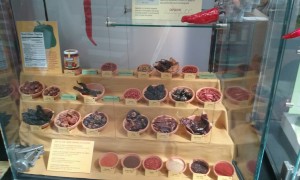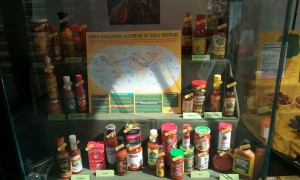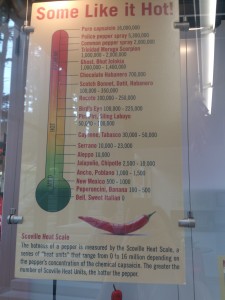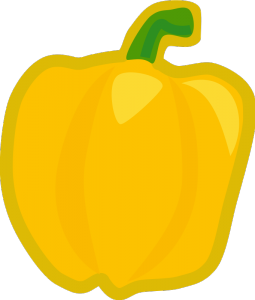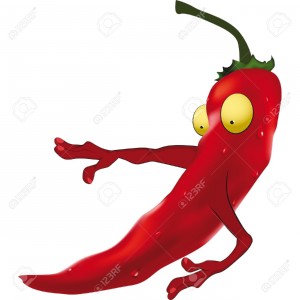It wasn’t a hot day. It wasn’t even a warm day. In fact, it was 60 degrees and cloudy. Not that the cool front was unwelcome, after a week of mid 80s weather. But, being used to the sluggish, blanketing heat of the south, I was slightly out of my element. Which is exactly why I was so interested in seeing the Pepper Party. Boy, did they bring the heat– literally. There was a large educational tent on peppers, but I’ll be honest: the main reason I went to this event was to get me some of those spicy snacks.
My parents are hardcore gardeners, and by hardcore I mean my mom has several different types of peppers alone in addition to numerous other vegetables. Unfortunately, it appears I have not inherited the gardening gene, but there was a certain comforting familiarity of being around so many plants. Even with some prior knowledge though, I was excited to learn some things I hadn’t known before.
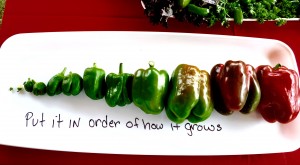
Pic 1: The life cycle of a bell pepper.
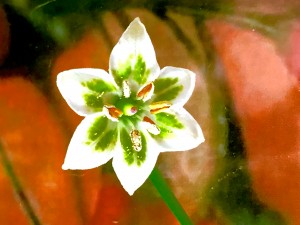
Pic 2: A flower from a pepper plant.
The enthusiasm of the volunteers was awesome. They were all so excited to share their knowledge of peppers, and it was great to see even some who had devoted their careers to the study of the plant. I met a woman who worked on breeding a sweet pepper and a hot, striped pepper in order to obtain a sweet, striped pepper (pic 3). She offered me a slice of a pepper she and her team had bred. I jokingly (but also a little not kidding) asked her if the raw pepper was sweet.
“It should be,” she replied, albeit a bit nervously.
I bit into the pepper. A sweet flavor exploded from the slice–it was the sweetest pepper I had ever tasted. See, I eat spicy, but I’m not usually a huge fan of raw peppers. There’s a certain bitterness in the aftertaste of a raw bell peppers that I usually don’t enjoy. This pepper, however, had no such problem. If all the peppers here were this tasty, I said to myself, I couldn’t wait to try out the other foods.
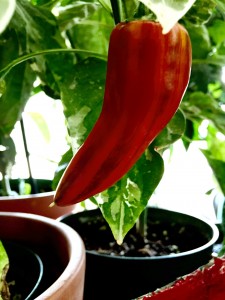
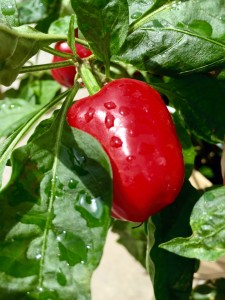
Pics 4&5: Pepper plants inside the educational tent.
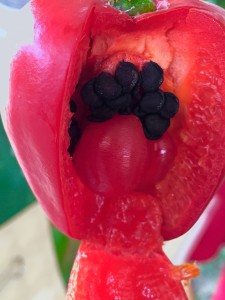
Pic 6: Black seeds in a pepper
Upon exiting the tent, I traveled around the world. Well, the countries that showed up, anyways. First stop: Mexico. I scooped up the chicken mole with some deep fried corn tortilla chips on the side. I’ll admit, I was a little disappointed. It was a sweet, rich sauce, but it wasn’t spicy at all. Maybe that’s how the dish is supposed to be made, I wouldn’t know. Nevertheless, it was delicious, and I moved onto Morocco in search of spice. This one proved mild as well, but with more of a kick than the mole. The dish was a beef meatball with cilantro and sour cream or yogurt, and it was also delicious.
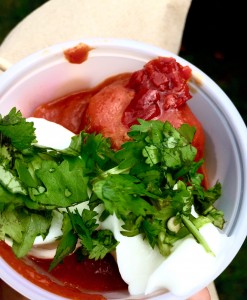
Pic 7: Moroccan meatball
Partly full but still in search of spice, I walked over to Thailand. Ah, this was familiar to me. The volunteer handed me a spring roll and asked, “sweet or spicy?”
“Both,” I told her, gleefully clasping my hand in anticipation. She drizzled Mae Ploy sweet chili sauce and Sriracha onto my spring roll, and I could barely contain my excitement before she handed the bowl to me. Sweet chili sauce is probably one of my all time favorite sauces. I eat it in the dining hall all the time, and I have it all the time at home. In fact, this dish was so good that I sprinted back for seconds before the Rose house group picture. I’m pretty sure I’m still holding some kind of food in my hand in the picture, but thus is the life of a continual eater. At the end of the Pepper Party, my mouth had acquired the comfortable warmth I’ve come to associate with well-cooked peppers–just the right amount of heat. Not the horrifying burning sensation when I eat something way too spicy and scramble for milk, nor the disappointment left behind by mild spices. I’ll definitely come back when they have the Pepper Party again, and next time I might even buy a jar of the jalepeño mustard they were selling. Maybe someday I’ll even try the Trinidad Moruga Scorpion, the hottest pepper in the world–but I’ll be sure to have lots of dairy products near me. And maybe an ambulance.
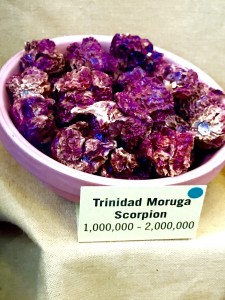
Pic 8: SPICIEST PEPPER IN THE WORLD OMG
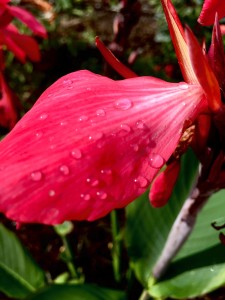
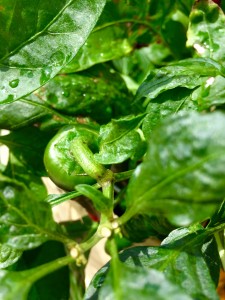
Pics 9&10: More pics from the botanical garden because I like taking pics and pretending I’m a photographer instead of a kid with an iphone

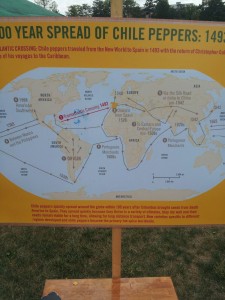 rest of the event unimpeded.
rest of the event unimpeded.
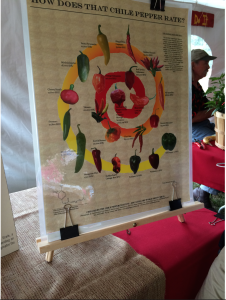
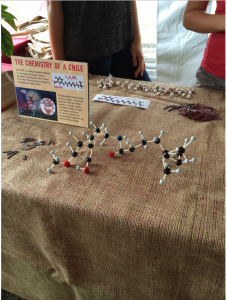
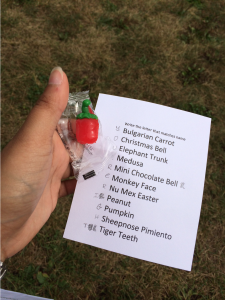
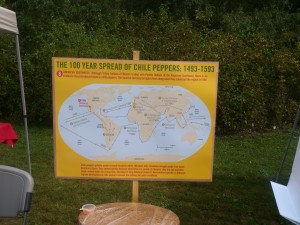









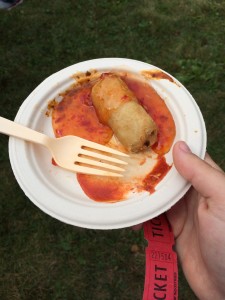
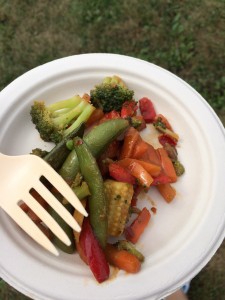
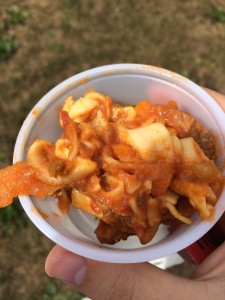
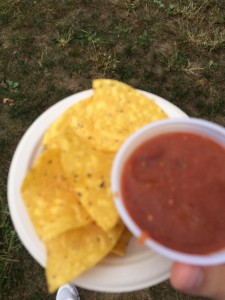
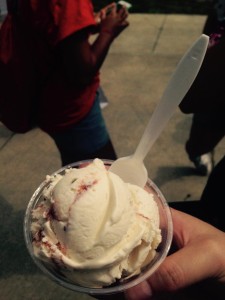
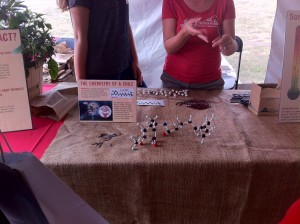 There was an information booth at which a lady talked about the chemical structure of capsaicin (what makes chili peppers hot) and the hotness scale. I immediately had a horrendous flashback of orgo, which I still need to study for.
There was an information booth at which a lady talked about the chemical structure of capsaicin (what makes chili peppers hot) and the hotness scale. I immediately had a horrendous flashback of orgo, which I still need to study for.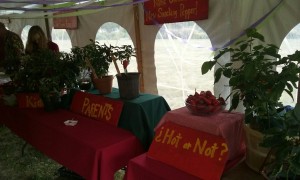
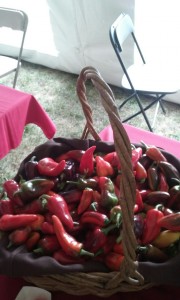 “I wanted to create a large marbleized sweet pepper by combining a large red hot pepper plant with a small yellow sweet pepper plant. By the third generation, I was able to accomplish this.”
“I wanted to create a large marbleized sweet pepper by combining a large red hot pepper plant with a small yellow sweet pepper plant. By the third generation, I was able to accomplish this.”